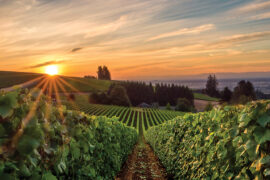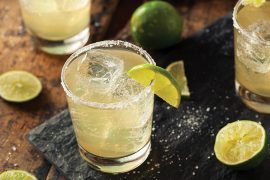The wine world’s last great secret may be your new favorite sip
By Matthew DeBord
HQ 104 | WINTER 2019
OK, so you’ve explored California and France, braved Germany, and even taken a few journeys to Australia, New Zealand, Argentina and Chile. There was that incredible holiday in Spain. On weekends, you might think about Washington State, Oregon, Upstate New York or icy Canada.
In other words, you’re a well-traveled wine lover. But there is one elusive region, typically just about everybody’s final frontier, even for long-term enthusiasts who know their Trebbianos from their Trockenbeerenausleses. I speak of South Africa, where wine is a huge and yet globally obscure business.
The country produces just slightly less than Argentina and Australia, and yet the wines from those nations are far better known. It isn’t that there aren’t entry points for South Africa’s wines; the country has internationalized its output in the 20th and 21st centuries, rapidly updating an industry that’s been around for hundreds of years, since the early colonial period in the 1600s.
If you want the familiar varietals — Chardonnay, Cabernet Sauvignon, Merlot — you can find them. This is South Africa operating in Aussie-Cali mode, aiming to satisfy the regional buyer but, more importantly, striving to establish an export business and garner shelf space in wine stores. The country’s versions of these wines are similar to budget bottlings from California and Australia. Nothing wrong with that, but South Africa is, after all, at the bottom of the world, a difficult country to get to — I once visited, and my flight from New York was among the longest I’ve ever taken. You should be more adventurous.
It’s worth it. Much of South Africa’s wine is made in the area around Cape Town, at the southern tip of the continent, a geography that in my opinion is the globe’s most gorgeous and breathtaking. Stand in Cape Town and stare due south. Antarctica is straight ahead. The Atlantic Ocean is to your right, the vast Indian Ocean to your left. It’s staggeringly spectacular. The climate is ideal for growing wine grapes: warm and dry, with cool nights. And they’ve been growing grapes for a long time here. When you dig in a bit, you’ll see the regions of Stellenbosch and Paarl come up, sort of the Napa and Sonoma of South Africa.
The proper adventure begins when you start to sample the truly local stuff. The main red varietal is Pinotage, a kind of rustic take on Pinot Noir, with more body and heft. The main white wine used to be called Steen, but is actually Chenin Blanc. To be honest, I quite like it. It has a steel-like, crisp flavor profile to go along with fruit that can range from brisk to juicy.
Pinotage is offbeat. If you’re curious, look for the Fleur Du Cap label at a local wine shop or online. It’s straightforward and the price is right at around $15. But my suggestion is to go higher once you’ve given the wine a spin. Don’t worry too much about the producer. Instead, aim to spend $30 – $40, to experience the best expression of Pinotage. What you get is a very unique taste, probably unlike what you’re used to from refined Cabernets and Bordeaux. If you’ve fooled around with wines from southern France, the flavors will be more familiar: husky, herbal, intense, yet not as jammy and thick as many Australian reds. At worst, Pinotage is underdeveloped and “green,” dominated by vegetal tones at the expense of sweet fruit. At best, Pinotage is succulent yet severe, with solid acidity and fine tannic structure. These are wines that can be aged and aged well.
They’re also good with a lot of different foods. Yes, Pinotage likes grilled and roasted meats. But unlike the mightiest Cabernets, you can also pair Pinotage with something other than thick porterhouse steaks. Chicken, pork, duck and even rabbit are all good. Imagine the vast array of beasts the South African citizenry washes down with vino, and you’ll get the idea. And if you want to match Pinotage with richer fish, that could be dandy. Roasted sea bass would be delicious.
South Africa’s biggest problem, then, isn’t a lack of quality. Nor is it a lack of value; the wines are absurdly underpriced for how good they can be. The problem really is that the wine world has become a crowded place, and while South Africa can compete with volume wines, the good stuff requires some patience and dedication.
The payoff is significant. You might actually find that you become sort of addicted to the obscurity. South Africa is basically the wine world’s last great secret, a gigantic region that’s woefully underexposed. That type of thing, I kid you not, is rare these days.





